Artificial Intelligence (AI) is changing how makers and small businesses approach laser engraving. Once limited to manual design prep and tedious test burns, today’s GRBL-based diode lasers—like the TwoTrees TS2, TTS-20 Pro, and TTS-55—can now take advantage of AI to design, optimize, and fine-tune projects faster than ever before.
In this guide, we’ll explore how makers can use standalone AI tools like ChatGPT and DALL·E alongside AI-enhanced laser software such as LightBurn and xTool Creative Space to bring creative ideas to life with more precision and less trial and error.
Why AI Matters for Laser Engraving
AI helps solve one of the biggest challenges in laser engraving: bridging creativity and technical precision. By automating repetitive tasks, enhancing image quality, and assisting with material-specific settings, AI allows you to focus on the artistry instead of the guesswork.
- Creative power: Generate unique engraving designs from simple text prompts.
- Smart automation: AI can recommend engraving speed and power settings for different materials.
- Consistency: AI-enhanced software improves contrast and reduces uneven burns.
- Accessibility: Even beginners can achieve professional results without advanced design training.
Whether you’re engraving wood, leather, acrylic, or slate, AI can transform your TwoTrees TS2 or TTS-20 Pro into an even more capable creative tool.
Using Standalone AI Tools for Laser Engraving Projects
Before opening LightBurn or LaserGRBL, AI can already help you plan, design, and troubleshoot. Let’s look at how tools like ChatGPT, DALL·E, and other AI generators fit into your workflow.
1. Planning and Setup with ChatGPT
ChatGPT can help you brainstorm product ideas, choose materials, and even write custom G-code snippets for GRBL-based lasers like the TwoTrees TS2 or TTS-55.
- Project ideas: “Suggest 10 engraved gift items I can make with a 10W diode laser.”
- Parameter guidance: “What are safe starting settings for engraving birch plywood with a TwoTrees TTS-20 Pro?”
- G-code help: “Write a GRBL command to test focus and power levels in a 5×5 grid.”
- Troubleshooting: “Why is my laser burning edges too dark?” (AI can suggest adjusting PWM or speed.)
These quick, text-based prompts eliminate guesswork—especially useful for GRBL users who manually edit configuration files or test different burn rates.
2. Creating Artwork with AI Image Generators
AI-powered image tools like DALL·E, Leonardo.ai, or Midjourney can generate engrave-ready artwork with simple language prompts. The key is to specify style and contrast in your request:
- “Minimalist mountain landscape line art for wood engraving.”
- “High-contrast animal silhouette, black and white, vector style.”
- “Modern geometric mandala pattern for laser engraving on bamboo.”
Once the image is generated, you can use free vectorization tools to convert it to SVG or DXF formats compatible with LightBurn and LaserGRBL.
3. Vector Conversion and Optimization
AI image generators output raster files (JPG/PNG). Before engraving, convert them to vector paths using:
- Inkscape – Free and open-source; includes “Trace Bitmap” feature.
- Vectorizer.AI – AI-based online converter with clean output.
- Adobe Illustrator – Professional-grade vector tracing.
Once converted, clean up any unnecessary nodes or overlapping lines for smoother engraving performance on your GRBL machine.
4. Enhancing Photos for Engraving
AI-based photo tools like Remini, Photopea, or GFPGAN can enhance older or low-resolution images before converting them to grayscale or dithered patterns for photo engraving. This is particularly effective for engraving portraits on slate, coated metal, or wood using the TwoTrees TS2.
AI-Powered and Smart Laser Software
While standalone AI tools handle creative prep, modern laser software platforms integrate intelligent automation directly into engraving workflows. Here’s how popular tools apply AI and smart algorithms today.
LightBurn: The Maker’s Standard with AI-Compatible Features
LightBurn doesn’t use generative AI, but it supports AI-generated content perfectly. It includes built-in tools that leverage machine learning for image cleanup and engraving optimization.
- Import SVGs, PNGs, or JPGs from DALL·E or Midjourney directly.
- Use image enhancement filters (contrast, gamma, sharpness) to prepare engraves.
- Trace images with auto-detection for clean vector outlines.
- Automate repetitive tasks with macros or ChatGPT-generated G-code scripts.
For example, you can prompt ChatGPT to write a macro that automatically tests five different speeds or power levels for your TwoTrees TTS-20 Pro, saving hours of manual calibration.
xTool Creative Space: True AI-Driven Design and Setup
xTool’s proprietary software includes several AI-driven tools that demonstrate where the industry is heading:
- AI-powered material detection through onboard camera vision.
- Automatic path optimization to reduce engraving time.
- Smart image-to-vector conversion with edge recognition.
Even if you’re using GRBL-based machines like the TwoTrees TS2 or TTS-55, you can replicate many of these AI-driven steps manually by pairing AI-generated designs with LightBurn’s workflow.
LaserGRBL: Lightweight, Smart, and AI-Friendly
LaserGRBL remains a favorite for GRBL users due to its simplicity—and it’s increasingly AI-friendly:
- Use AI-generated artwork or SVGs directly in LaserGRBL.
- Leverage built-in dithering modes that approximate AI photo engraving techniques.
- Integrate ChatGPT macros for testing or routine engraving commands.
This makes it ideal for users of the TwoTrees TTS-20 Pro and TTS-55 who prefer lightweight software without complex setup.
AI Workflow Example: From Idea to Engraved Product
Let’s walk through how you could use AI from start to finish with a TwoTrees TS2 Laser Engraver to create a personalized home décor project:
- Idea generation: Use ChatGPT to brainstorm: “Create ideas for engraved family name plaques for a 450×450 mm workspace.”
- Artwork creation: Prompt DALL·E or Leonardo: “Minimalist mountain silhouette with family name text, line art, black and white.”
- Vector conversion: Convert the PNG to SVG using Vectorizer.AI and refine in Inkscape.
- Engraving setup: Import into LightBurn, apply contrast and sharpness filters, and set parameters based on ChatGPT’s recommended speeds for birch plywood (e.g., 2000 mm/min at 80% power on the TTS-20 Pro).
- Simulation and test: Use LightBurn’s preview to check engraving paths. Perform a quick test burn on scrap wood.
- Final engraving: Run the job on the TwoTrees TS2. Adjust speed or power if needed, then finish with a sealer for a polished result.
This hybrid workflow combines AI creativity with the reliable precision of GRBL control for consistent results every time.
Practical Benefits of AI in Laser Engraving
- Save time: Generate designs, test settings, and fix problems in minutes instead of hours.
- Improve quality: Use AI photo enhancement and path optimization to achieve smoother burns and cleaner lines.
- Boost creativity: Explore new engraving themes or gift ideas with text prompts.
- Reduce waste: AI-guided settings mean fewer failed test runs and cleaner material usage.
- Accelerate learning: New users of machines like the TwoTrees TTS-55 can learn faster with interactive, AI-based guidance.
Challenges and Limitations
- Cleanup needed: AI-generated images often contain excessive detail—simplify them for clean engraving paths.
- Verify safety: Always double-check G-code generated by any AI tool before running it on your laser.
- Hardware constraints: Some AI recommendations assume industrial hardware; adjust for your GRBL laser’s limits.
- Cloud privacy: Avoid uploading client or proprietary images to public AI systems.
AI should enhance your process, not automate it entirely—you remain the designer and operator.
Quick AI Wins for Laser Engraver Users
- Ask ChatGPT for starting speed/power settings for three materials you use most.
- Use DALL·E to generate SVG-ready ornaments or coasters for the TwoTrees TTS-20 Pro.
- Apply LightBurn’s auto-contrast and gamma correction to a grayscale photo before engraving on slate.
- Create an AI-powered checklist for engraving safety and setup routines.
Conclusion
AI is no longer futuristic—it’s a practical, daily tool for laser engraving. With accessible systems like the TwoTrees TS2, TTS-20 Pro, and TTS-55, anyone can combine AI design tools and smart engraving software to create faster, cleaner, and more personalized projects. Whether you’re optimizing G-code, generating artwork, or refining burn quality, AI helps you work smarter—without losing the human touch that defines handmade craftsmanship.
Create Smarter, Engrave Better
Ready to bring AI into your laser engraving workflow? Pair modern AI tools with precision hardware to unlock your creative potential. Explore TwoTrees laser engravers built for innovation and accuracy:
- TwoTrees TS2 Laser Engraver — Reliable, precise, and powerful for everyday AI-assisted engraving.
- TwoTrees TTS-20 Pro — Dual-compression diode power with excellent detail reproduction.
- TwoTrees TTS-55 — Compact and beginner-friendly with GRBL control.
Use AI tools like ChatGPT, DALL·E, and LightBurn to take your engraving projects to the next level—no matter your experience level.




